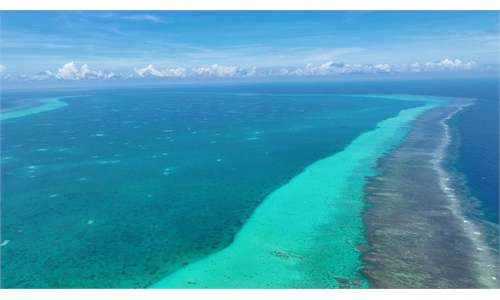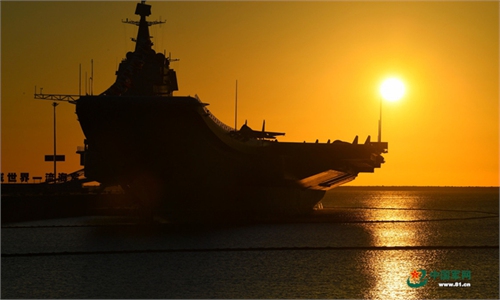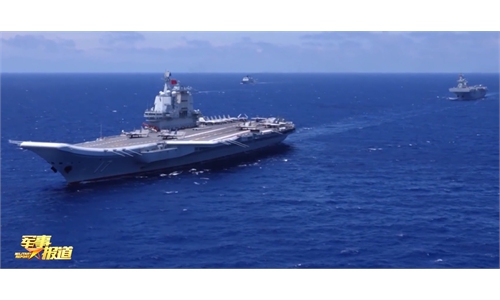Documentary reveals PLA developments in aircraft carriers, J-20 stealth fighters, drones
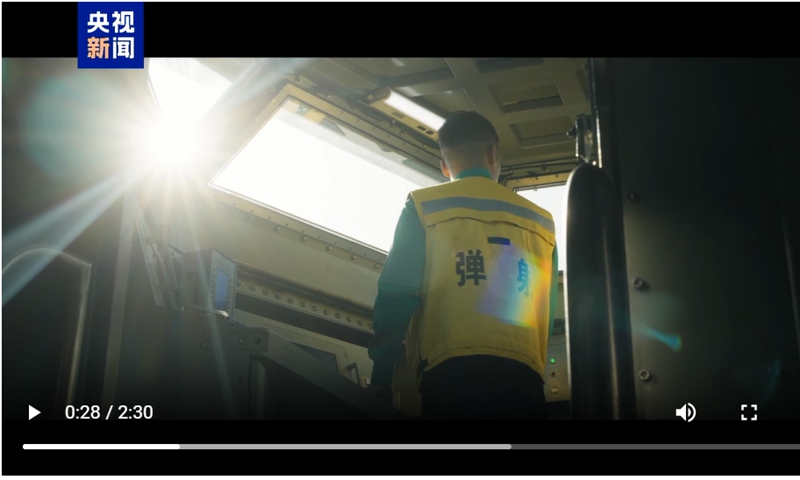
Screenshot of the documentary Cui Huo.
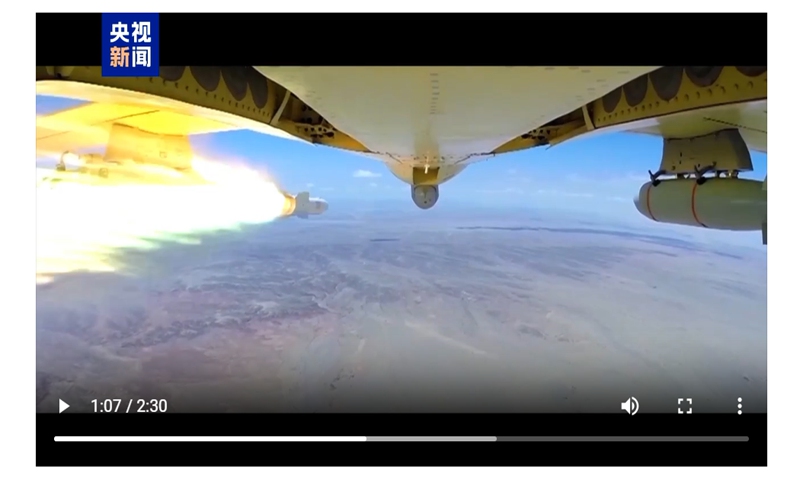
Screenshot of the documentary Cui Huo.
A six-episode military-themed documentary, Cui Huo, literally meaning a process of increasing hardness and strength of the metal material, was released recently with lots of debut footage, depicting the latest progress of Chinese aircraft carriers, revealing a standoff between the Chinese and a foreign carrier flotilla, and a J-20' pilot disclosing his feeling of seeing Taiwan island during flight. The documentary demonstrated China's tenacious efforts to strengthen its military.Once ranked third on the trending of China's social media Sina Weibo, Cui Huo attracted wide attention with its disclosure of the advanced developments and accomplishments of major military equipment such as aircraft carrier. The documentary's emphasis of aircraft carrier illustrates that China has been more mature in the operation of aircraft carrier with rising combat capability, Zhang Junshe, a Chinese military expert, told the Global Times on Tuesday.
In the third episode, cabin views of the Fujian, China's first aircraft carrier equipped with an electromagnetic catapult system, was unveiled for the first time. The footage showed crew members were making preparations before a simulated catapult test, also the close-up shot of the electromagnetic catapults of the Fujian can be seen in the clip. Du Wenlong, a Chinese military expert, said on social media that the disclosed details indicate that the Fujian is progressing smoothly, with various facilities and key weapon tests functioning effectively.
Zhang also suggested that with the electromagnetic catapult system put into operation and the early warning aircraft on board, the aircraft carrier Fujian formation will expand the range of early warning capabilities, and the air combat capability will be strengthened, which will enable the carrier formation's systematic combat capability to get a qualitative leap, Zhang noted.
The documentary also unveiled that a new type of carrier-borne warplane was tested on the Chinese People's Liberation Army (PLA) Navy's first aircraft carrier, Liaoning, and media outlets speculated that the new aircraft could be the long-expected J-35, China's next generation carrier-borne stealth fighter jet.
Zhang said new fighter jet allows the Liaoning's formation to significantly improve its capabilities in air defense, land and sea attacks.
The documentary also released footage of a face-off between Chinese and foreign carrier groups for the first time. The fifth episode revealed the experience of the Liaoning aircraft carrier formation facing a scenario of four foreign fighter jets continuously approaching it in the waters of the Western Pacific Ocean.
"When we arrived at the designated airspace, the foreign aircraft continued to inch closer to us, for which we took the corresponding action and made them aware that we possessed the capability to respond," Hou Haipeng, a naval pilot on the aircraft carrier Liaoning said in the video, adding that ""We took off with live ammunition, and the other side definitely took off with live ammunition as well." The other side didn't anticipate that we are capable of performing such maneuvers, resorting to retreat when they realized that the situation wasn't going quite right, Hou said. "For decades only foreign forces have engaged in activities above the waters of the Western Pacific, but now we can compete with them on the same field."
Another face-off between Chinese and foreign warships was recorded in the documentary, occurring when three foreign vessels attempted to approach the guided missile destroyer Changsha from three directions near Xisha Islands in South China Sea, attempting to forcefully breach China's 12 nautical mile territorial waters. After 47 hours of a strenuous face-off, the opponent failed to find an opportunity to realize their goal, and had to left, a crew member from the Changsha recalled in the documentary.
Zhang believes that Chinese navy's encounters with foreign warship flotillas are more regular with the PLA Navy's improved equipment and farther voyages, and when confronted with provocative actions, Chinese navy could take professional and effective countermeasures in accordance with international law to safeguard the safety of its fleet.
Some Western countries are not accustomed to such changes brought by Chinese Navy, particularly when these countries using the so-called freedom of navigation as an excuse to conduct close-in reconnaissance are met with response from PLA warships and military planes, making them feel more and more uncomfortable, Zhang added.
Besides, the documentary also captures the story of a pilot of China's J-20 stealth fighter. "I can never forget seeing the island of Taiwan when I was flying the J-20," Dong Jun, one of the first pilots of the J-20, said in the documentary, which triggered unexpected heat as outsiders speculated that the J-20 participated in patrols in the Taiwan Straits.
In a clip, Dong led the team to accomplish the mission of refueling J-20 at night following a long flight time, which presents a technical challenge and also a test of flight skills, mental ability and formation cooperation, with the test data serving as a significant support for J-20's capacity of all-domain operation in full-time, regarded by experts that the current operational airspace of the J-20 has the potential to completely cover the its intended mission areas.
Some systematic far seas trainings of the PLA Air Force's WZ-7 drones in 2024 were also featured in the documentary, confirming that the China's drones are equipped to handle tasks where manned planes can't in terms of survival rate, combat damage ratio, and cost-effectiveness ratio, the video stressed.
